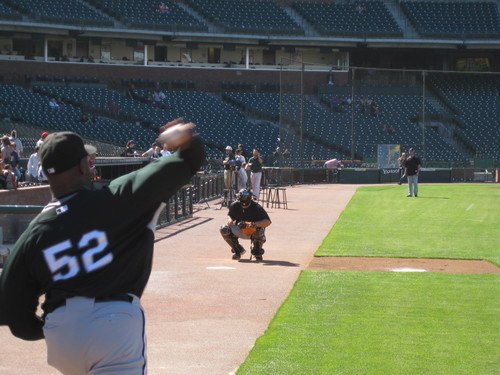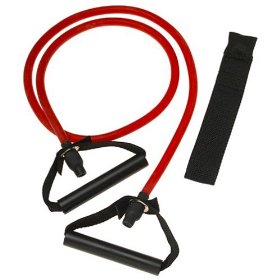Lack of Fitness: In-Season Programming Gone Wrong

In-season programming for baseball athletes is a tricky subject. Eric Cressey has written a lot about the subject as of late, and I highly recommend you check it out. But I wanted to tackle some of the specific cases we’ve seen in our facility lately, and show how in-season programming can be a tough nut to crack – especially while navigating around injuries and illness.
Two of our baseball athletes have missed significant time at the beginning of their high school baseball season due to illness (flu) and injury (stress fracture, left foot). The first problem is totally systemic and very severe; as a result, the athlete just needs to rest and do minor flexibility things without imposing a stress that requires systemic recovery from. The second problem is local; the athlete can do stuff from a kneeling, prone, or supine position to get a training effect without doing major damage to the affected area. However, in both cases, they are facing a big setback right when they should be finishing up the skill acquisition portion of their training cycles (both are two-way players and in their starting rotations – the same team, even).

The second athlete has been playing in his HS games but has struggled on the mound. The velocity has dipped and his control is erratic despite his hitting being completely unaffected (4-5 with two doubles so far). His pitching skill is not where it needs to be, as he missed 2-4 weeks of mound time which would have contributed significantly to his ability to pitch. Additionally, his workout attendance has been erratic as of late due to schoolwork and a out-of-town game trip, and he’s been suffering an “overuse” injury to his throwing arm. We talked about it for a bit today, and it’s pretty clear that his “injury” is a lack of fitness problem – he has been underworked, not overworked! He’s not getting the flexibility/mobility work in for the muscles that control the scapula, and his maintenance strength training has been somewhat neglected. What he has been doing a lot of is throwing in practice, and this balance has been upset as a result.
Eric put it very well when he said:
If a young athlete pitches fewer than three innings per week, though, we just train him like we would a position player, but try to make sure that at least one of these training sessions comes the day after throwing. I like this approach because it not only “consolidates” stress into a 24-hour block to allow for better recovery, but it also forces a kid to go through his mobility drills and manual stretching with us to “normalize” his range of motion after a throwing appearance.
We treat our short appearance pitchers very much the same way, though it depends on the level of advancement of the athlete. If we have a HS Varsity pitcher who threw 3 submaximal innings in a game on Monday, and he comes in on Tuesday, what we do depends very heavily on how hard he throws and how advanced he is as an athlete. The 6’0″ 190 lbs junior who throws 79-81 MPH with little strength training can be exposed to a heavier workload – including medball work and throwing-specific work – than the 5’11” 195 lbs senior who is sitting 89-90 MPH, has a 300 lb 1RM Squat, and a 360 lb 1RM deadlift with a college scholarship on the line!
Like many things in this industry, it’s a continuum – this one is based around training status of the pitcher in question. The more skilled/highly trained the athlete is, the less stress we want to impose on him in a consolidated block of training stimulus – and vice versa. This is a concept that goes largely ignored, and is even reversed by most baseball coaches! They think that youth athletes should be babied while the older guys can handle more workload – and while that’s true in a vacuum, they don’t realize that an appearance in a game by the older guy who is further along the training continuum is taxed more heavily by his game workload!
It’s important to get in your training when you can – pulling your resistance bands for mobility/flexibility work and foam rolling on a regular basis is critical, but it’s also necessary to get maintenance (or even slight incremental) strength/speed training in where you can.
Comment section
Add a Comment
You must be logged in to post a comment.

Brewitnow -
Care to talk about rest/recuperation time with the body in general, not just after injury? I cite two points here: first, I trained for a while using H.I.T training, specifically a precise version of the “Super Slo Mo” protocol. I did find that once I could get my head to stop quitting on me, I could completely exhaust myself and need a solid week to recover for all major muscle groups (compound movements were mostly used [pulldowns, squats, pull-overs, etc]). Likewise, we frequently see athletes who are forced to take time off to recover from injury, come back even stronger (for a while). Clearly, if the stress placed on the body is high enough, recuperation time is always too short in the professional sports world, where there isn’t sufficient time off, in my opinion, when forces and stresses are high enough. The elbow and shoulder of a pitcher come to mind. And during Super Slo Mo, I was reducing force by reducing velocity (F=MA), but pitchers of course do not. Your thoughts? Thank you! –Steve Gardner CPT
admin -
Yes, that’s a tough subject, Steve. I’m not a fan of HIT/SSM for any athlete (or weekend warrior) for a lot of reasons, but that is probably something else to discuss.
Training heavy twice per week for most in-season athletes to maintain strength is a good general guide. If the athlete is approaching the intermediate plateaus, doing two full-body workouts per week after competition is the best way to approach things so you can consolidate stressors in a short window. Nutrition will play a big part here – getting enough carbs pre-workout and protein/fats post-workout will be huge.